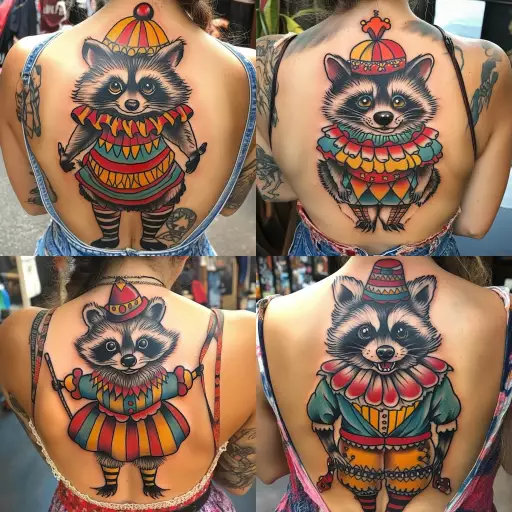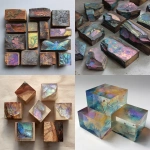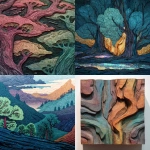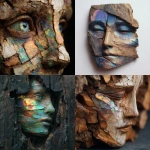Explore the Best AI Image Gallery

Quantum Leaps: Reshaping Creativity with Quantum Computing
The realm of creativity is on the cusp of a profound transformation, driven by the burgeoning field of quantum computing. This revolutionary technology, harnessing the enigmatic principles of quantum mechanics, promises to unlock unprecedented capabilities for artists, designers, and innovators alike.
Quantum computers operate on fundamentally different principles than their classical counterparts. They leverage the superposition and entanglement of quantum bits, or qubits, to perform calculations at an exponentially faster rate. This immense computational power opens up a Pandoras box of possibilities for creative applications.
Unleashing New Artistic Frontiers
Imagine generating breathtakingly intricate artwork in real time, composing symphonies with algorithms that mimic the nuances of human emotion, or designing immersive virtual worlds populated by AI-driven characters. These are just a few examples of how quantum computing can revolutionize artistic expression.
- Generative Art and Design: Quantum algorithms can be used to create complex and aesthetically pleasing patterns, textures, and designs that are beyond the reach of traditional software. Artists can leverage these algorithms to generate unique artwork, explore new visual concepts, and push the boundaries of creative design.
- Music Composition and Sound Design: Quantum computers can analyze musical structures, identify recurring patterns, and generate novel melodies and harmonies. Composers can utilize these tools to break free from traditional constraints, experiment with unconventional soundscapes, and create truly innovative musical experiences.
- Interactive Storytelling and Immersive Worlds: Quantum computing can power highly interactive and immersive narratives. Imagine virtual worlds where characters react realistically to player choices, stories adapt in real time based on user engagement, and the environment itself evolves dynamically.
Beyond Art: Transforming Industries
The impact of quantum computing extends far beyond the realm of art. Its transformative potential reaches across numerous industries, including:
- Filmmaking and Animation: Quantum algorithms can accelerate complex rendering processes, enabling filmmakers to create stunningly realistic visuals and intricate animations with unprecedented speed and efficiency.
- Fashion Design: Quantum-powered design tools can analyze trends, generate innovative patterns, and personalize garments based on individual preferences, revolutionizing the fashion industry.
- Advertising and Marketing: Quantum computing can enable highly targeted advertising campaigns by analyzing consumer behavior, predicting preferences, and personalizing marketing messages with unprecedented accuracy.
Ethical Considerations and the Road Ahead
As with any powerful technology, quantum computing raises important ethical considerations. Ensuring responsible development and deployment is paramount.
- Bias and Fairness: Quantum algorithms are trained on data, and if that data reflects existing societal biases, the resulting outputs can perpetuate these inequalities. It is crucial to address bias in training datasets and develop mechanisms for fairness in quantum-powered systems.
- Privacy and Security: Quantum computers pose a potential threat to current encryption methods. It is essential to develop new cryptographic techniques that are resistant to quantum attacks to protect sensitive information.
- Access and Equity: The benefits of quantum computing should be accessible to all, not just a select few. Bridging the digital divide and ensuring equitable access to this transformative technology is crucial for its responsible development and deployment.
Despite these challenges, the future of quantum computing in the creative industry is bright. As research progresses and hardware becomes more accessible, we can expect even more groundbreaking applications to emerge, blurring the lines between reality and imagination and ushering in a new era of artistic expression.
](https://images.ai-img.art/thumbnails/150/3fa1fec0508df17cd82cf66806b9fddfb0fef3b624f05520a22afde084c66822.webp)




](https://images.ai-img.art/thumbnails/150/477d56ac263bedbedb83610fa5278dd787f18bed6932605c9991a22a64a10375.webp)











](https://images.ai-img.art/thumbnails/150/f0b7939a19ab98d4c0fdc6789f651ef7c7124007071d8c7447b50b069ae68c27.webp)







](https://images.ai-img.art/thumbnails/150/a69d53a113ddf1359541b29f34c374131643f6928d2df52596852b92a4094299.webp)







](https://images.ai-img.art/thumbnails/150/7291fa34d974ce2b36ae1e3c124c4f19a5c1d2f432e7e9c33bc41e3a4f0b56bb.webp)

](https://images.ai-img.art/thumbnails/150/f71c540756c1c6c076e0c10359c59592da93a9f050accf3387fa92f771317c86.webp)




](https://images.ai-img.art/thumbnails/150/e3e897a9873fb4983dedd434fae30085608fd4b2263a07859dfcd32488a5dc71.webp)





](https://images.ai-img.art/thumbnails/150/4cca1ecd7a461a516a228244d12e5b5a798c9744fc671ce0c52a8b69209c8970.webp)


